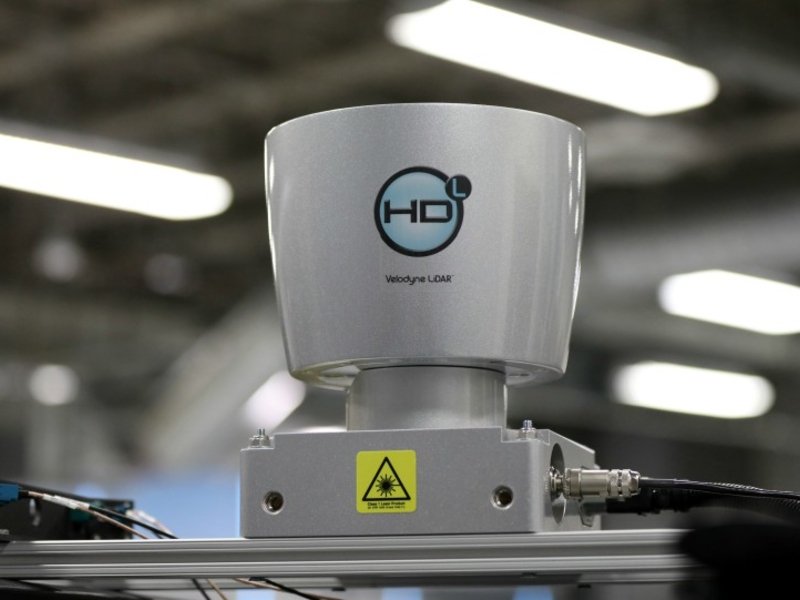
Velodyne Lidar Inc. could ride higher as the self-driving car revolution takes hold — that is if such modes of transport come to realization sooner rather than later.
The maker of sensors used in advanced driver-assistance systems and self-driving vehicles is projected to see robust revenue growth and hit full-year profitability as soon as 2022, according to CEO Anand Gopalan.
“We have seen a tremendous momentum, even in our own pipeline, of customers moving to mass-market commercialization of their applications,” Gopalan said in an interview, referencing the greater use of ADAS systems in consumer cars and the growth of autonomous vehicle companies whose systems rely on lidar. Yet, the timeline for broad deployment of autonomous vehicles appears to be in question.
Velodyne Lidar shares sank on Wednesday after emerging from a special-purpose acquisition company in the wake of controversy around Nikola Corp., which made its public market debut in similar fashion. Velodyne started trading Wednesday on the Nasdaq from special-purpose acquisition company Graf Industrial Corp. The common stock under the ticker VLDR closed Wednesday’s trading down 24.5 percent to $18.69.
The timeline for fleets of autonomous taxis being deployed in the real world will pick up from 2025 into 2028, with a limited rollout of self-driving car services from 2022 before they scale, Gopalan added.
The Ford Motor Co.-backed company projects revenue growth of 60 percent a year from an estimated $100 million in sales this year. Gopalan sees that figure rising to $680 million by 2024, with half of that expected to come from already-inked contracts.
Customer conversion
“We are seeing tangible progress in converting lead customers into signed multiyear agreements. On the back of that, we are able to get a much higher predictability of our revenue levels,” he said. Velodyne had three signed agreements at the start of the year, and 18 by Aug. 1.
Yet, autonomous vehicle deployment dates are uncertain, BloombergNEF analyst Andrew Grant said. Grant expects roughly 135,000 lidar-equipped self-driving taxis to hit public roads globally by 2028.
Velodyne’s early-mover status is important, Grant said, with lidar systems playing in robotics, automotive, and trucking, yet the field has become more crowded lately with competitors Luminar, Innoviz and Quanergy in the mix.
“Despite some companies pursuing autonomous vehicle development without lidar, we believe it will be an important sensor for achieving level four highly autonomous vehicles,” Grant said. “However, not all lidar units are created equal, and the technology type, quantity and price of those sensors could vary between vehicle models.”